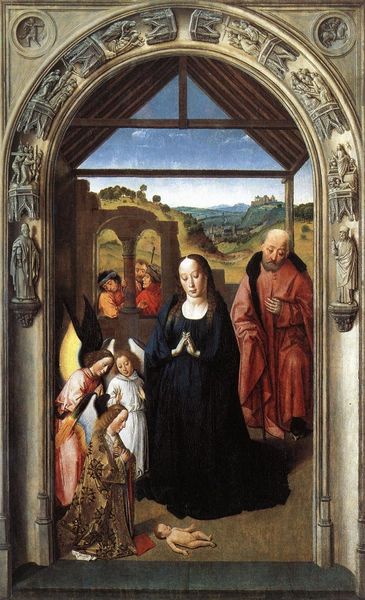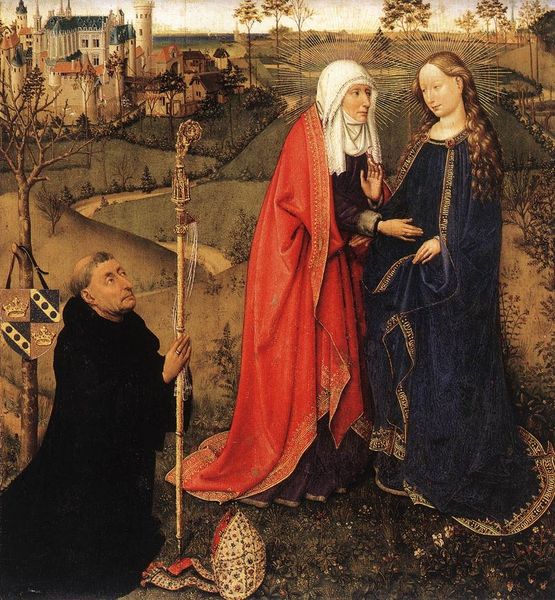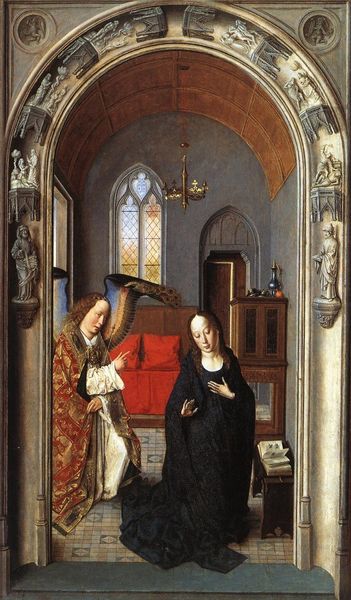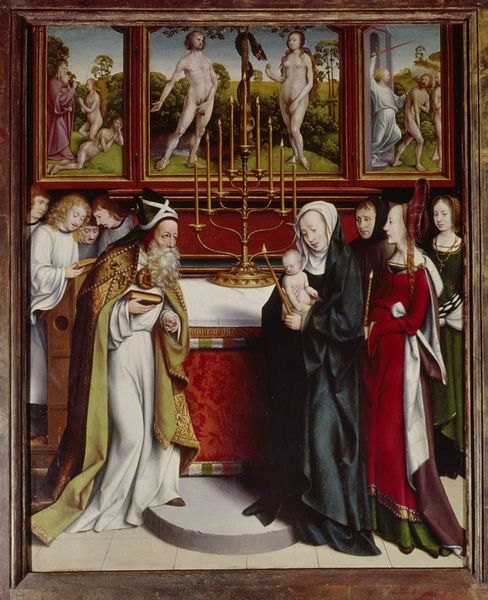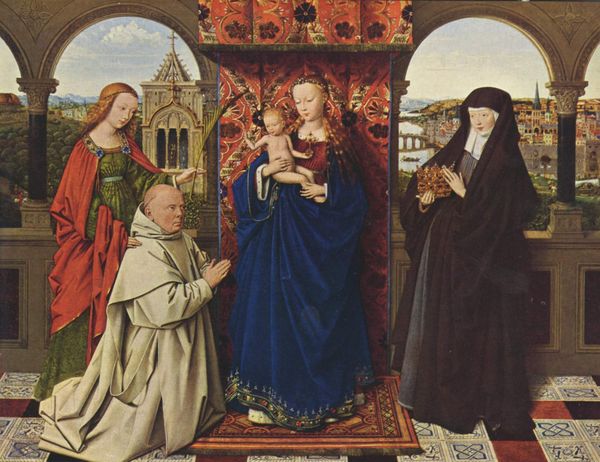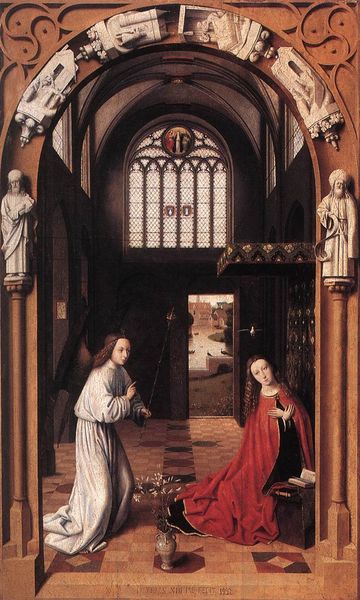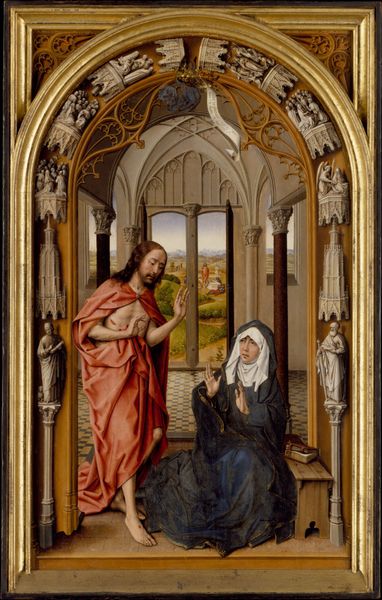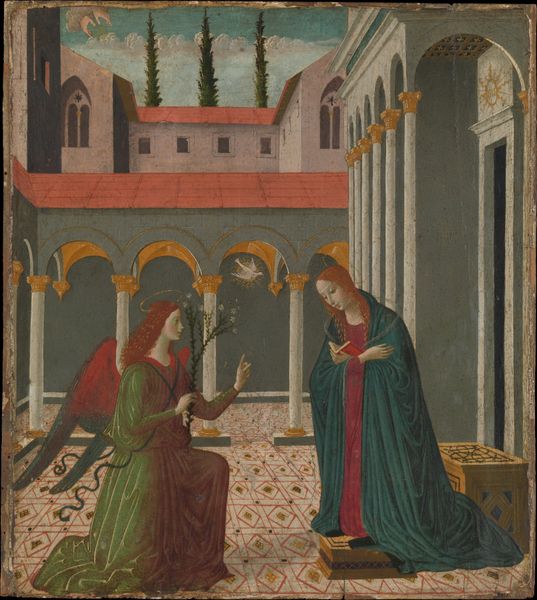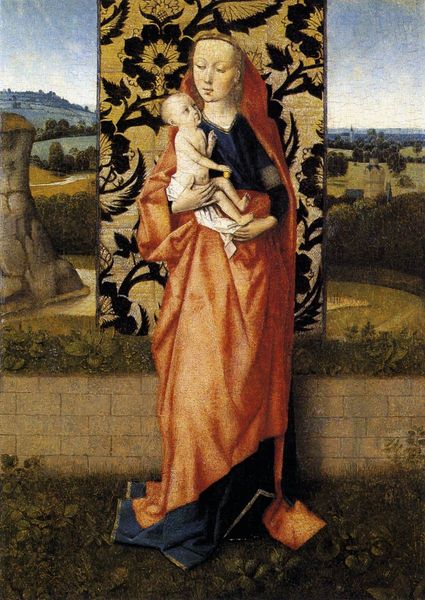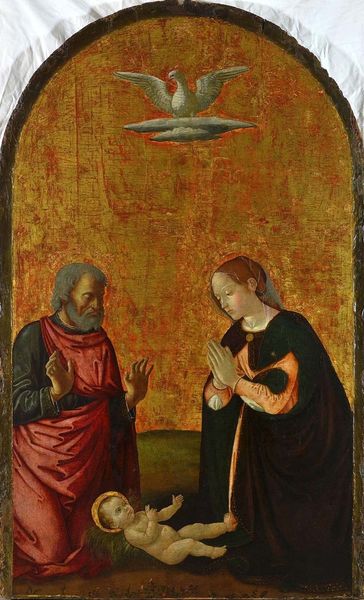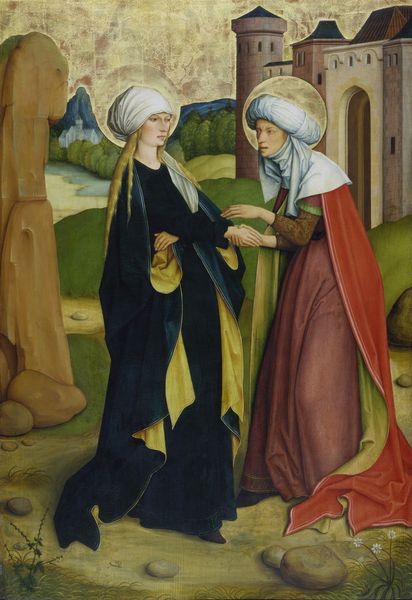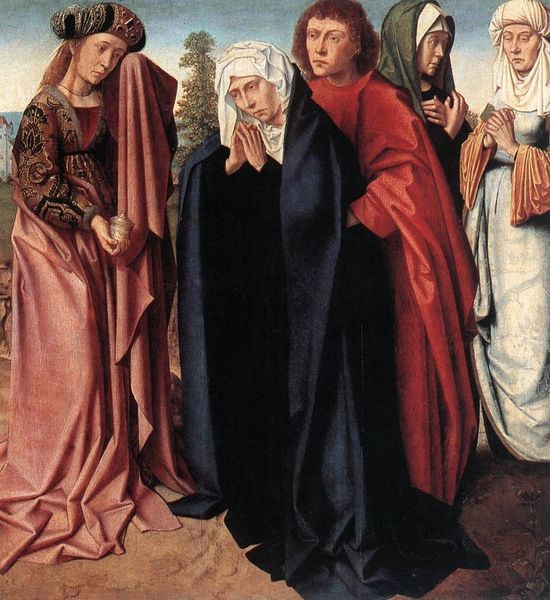
tempera, painting, oil-paint
#
portrait
#
narrative-art
#
tempera
#
painting
#
oil-paint
#
oil painting
#
christianity
#
history-painting
#
early-renaissance
#
portrait art
#
virgin-mary
Copyright: Public domain
Editor: This is "The Visitation," painted by Dirk Bouts around 1445, using oil and tempera. The figures of Mary and Elizabeth are so striking against that detailed landscape. The folds of their clothing look incredibly heavy. How should we understand a piece like this? Curator: Let's consider the materials themselves. Bouts' choice of oil paint allows for a rich saturation of color, and look at the way he uses it to depict the fabric! Red was one of the most expensive pigments at the time, so its usage here signified the importance of Elizabeth and this meeting. Consider the labour involved in acquiring and processing those materials, not only for Bouts, but for his patrons. The entire artistic production reflects the power relations within that society. Editor: So the very pigments speak to a system of value? Curator: Precisely. And look at the frame! The carved figures surrounding the main scene weren’t merely decorative. They added another layer of artisanal labour to the object. These materials weren't just "paint" and "wood;" they represented a huge amount of value. Editor: It's interesting how the "craft" of the frame interacts with the so-called "high art" inside it. Was Bouts deliberately blurring that boundary? Curator: The question becomes: was that distinction as firm then as we perceive it now? Both painting and sculpture are skilled labor and require economic investment in training and material. Examining the work from this perspective challenges traditional views of what makes art "high" or "low". We understand value very differently, separated from that specific place and moment in history. Editor: I’ve never considered paintings in terms of raw material costs before, focusing more on symbolic meaning. Curator: Exactly! That shift in focus, towards process and making, unveils a whole new layer of interpretation, of revealing socioeconomic power. It alters how we perceive its function, not just as devotional, but social. Editor: That's fascinating. I will certainly look at the pieces from a new angle. Curator: Indeed, it enriches the whole experience by connecting us to the practical side of production and consumption.
Comments
No comments
Be the first to comment and join the conversation on the ultimate creative platform.
